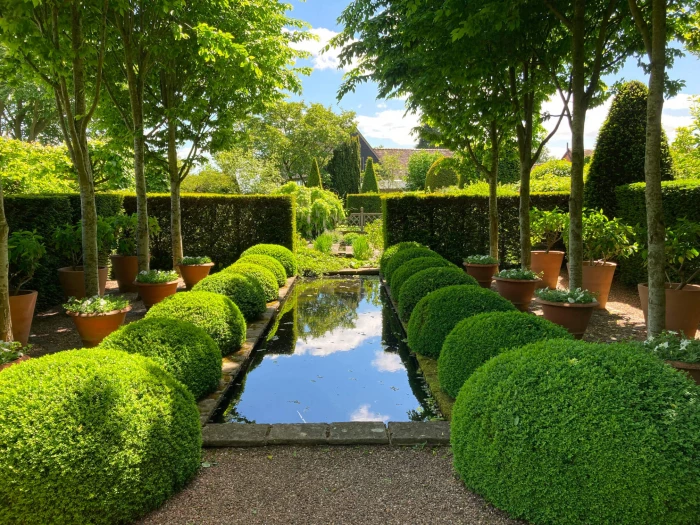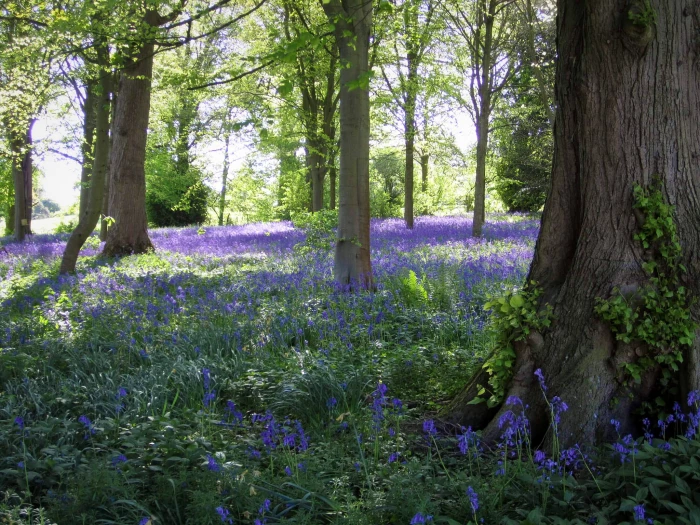Protection & Information
Parks and gardens are key components of the historic environment, and take many forms, including public parks, the grounds of historic houses and sites, cemeteries and town squares: what they have in common is that they are all designed landscapes. Some are recognised by national designation, listed by Historic England on the Register of Parks and Gardens of Special Historic Interest in England, while others are identified as significant by local planning authorities. These are all 'heritage assets' (having a degree of significance meriting consideration in planning decisions, because of their heritage interest) to which national planning policy applies.
The Gardens Trust, as the statutory consultee for parks and gardens, plays a key conservation role and supports the County Gardens Trusts (CGTs) in the protection and conservation of designed landscapes.
There are nearly 1700 parks and gardens on the Register of Parks and Gardens of Special Historic Interest in England (the Register), which are graded using a system similar to that for listed buildings:
- Grade I – Sites of exceptional interest (around 9% of registered sites)
- Grade II* – Particularly important sites, of more than special interest (around 28% of registered sites)
- Grade II – Sites of special interest, warranting every effort to preserve them (around 63% of registered sites)
Registration of a park &/or garden is a 'material consideration' in the planning process, and also triggers specific elements of national planning policy. Local lists of parks and gardens of local significance are also material to the planning process. As 'designated heritage assets', registered parks and gardens have a high status within the planning system. However, registration is not the only way in which parks and gardens may be recognised. Planning policy also applies to 'non-designated heritage assets' which are identified by the Local Planning Authority (LPA).
The Register continues to be developed and designed landscapes added, so the identification and careful consideration of non-designated sites by the LPA is made all the more important. Local lists identify heritage assets which are valued by the local community as distinctive elements of the local historic environment, and may certainly include parks and gardens. The inclusion of parks and gardens in a local list raises their profile and also brings the benefits of national and local planning policy.
Understanding Significance
The workings of the National Planning Policy Framework (NPPF) is based on the concept of significance; stating that heritage assets '...are an irreplaceable resource, and should be conserved in a manner appropriate to their significance, so that they can be enjoyed for their contribution to the quality of life of existing and future generations'.
Understanding the significance of a park or garden, and assessing the impact of a proposal upon that significance, is an essential step in the application of the NPPF. Determining significance depends on an understanding its evolution and fabric, and then determining the interests it demonstrates, using input from consultees and other experts, desk-based research using information such as historical maps and archives, and field-based research which looks at various features on the ground.
An applicant is required to describe the significance of any affected park or garden. This will involve both historical research and analysis, to produce an assessment of significance and impact upon it; 'heritage impact assessments', or similar, should be checked for their compliance in this regard before an application is validated. Consideration should also be given to consulting the local County Gardens Trust on applications relating to both registered and locally listed parks and gardens or others with relevant Historic Environment Record (HER) information, and engaging with local communities on what is important to them.
Parks and gardens should also be included in Local Plans as part of a '...positive strategy for the conservation and enjoyment of the historic environment', which 'should be shaped by early, proportionate and effective engagement between plan makers...and statutory consultees'
Locally important parks and gardens can also usefully be identified for inclusion within 'local lists'; the local CGTs may have published and supplied their gazetteers of parks and gardens of local significance or may be able to assist in undertaking the necessary research.
The valuable role of historic parks and gardens in green infrastructure planning policy is well established. Sites should be identified and appropriately protected and enhanced as part of policy making and planning decisions . The DEFRA 25 Year Environment Plan (11/01/2018), identifies goals for improving the environment and these specifically include 'Enhancing beauty, heritage and engagement with the natural environment' to make sure that there are high quality, accessible, natural spaces close to where people live and work...and encouraging more people to spend time in them to benefit their health and wellbeing.
The survival of the heritage environment, which has adapted to environmental challenges over centuries, is a source of essential knowledge in future strategy decisions which seek to mitigate and adapt to climate change. Equally, the potential vulnerability of heritage assets should be considered in the context of wider development programmes.
Protect
Gardens
Shropshire has a rich heritage of parks and gardens, and the Shropshire Parks & Gardens Trust is closely involved in protecting them from inappropriate development and neglect
Learn
Heritage
The Shropshire Parks & Gardens Trust offers an exciting programme of talks and garden visits and provides opportunities to learn about the historic development and design of gardens
Support Us
a Member
Complete our membership form and:-
Visit gardens not open to the public
Enjoy free attendance to talks
Receive a regular magazine

Shropshire Parks & Gardens Trust
24 Greenacre Road
Shrewsbury
SY3 8LR


